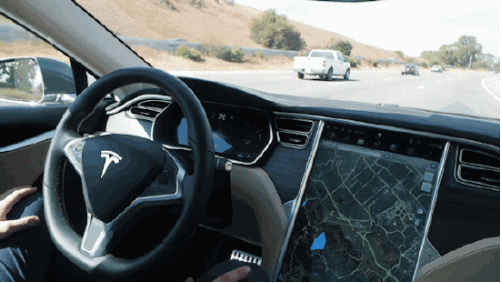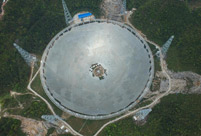

 |
| (File Photo) |
A driver riding on a road in Williston, Florida, southeastern United States, has become the first fatality operating a Tesla electric vehicle on "autopilot" mode.
The accident took place on May 7, and U.S. automaker Tesla, based in northern California, said Thursday it learned the evening before that the U.S. National Highway Traffic Safety Administration (NHTSA) is opening a preliminary evaluation into Tesla vehicle's autopilot feature.
In a blog on its website, the company acknowledged that in the fatal crash involving a Tesla S, a luxury model, "neither autopilot nor the driver noticed the white side of the tractor trailer (turning in front of the vehicle) against a brightly lit sky, so the brake was not applied," resulting in the sedan to "pass under the trailer."
While citing the trailer's high ride height, its positioning across the road and "extremely rare circumstances" of the impact as elements leading to the driver's death, Tesla assumed that had the Model S impacted the front or rear of the trailer, even at high speed, its advanced crash safety system would likely have prevented serious injury "as it has in numerous other similar incidents."
It defended itself with statistics that there is a fatality every 94 million miles, or 151 million kilometers, among all vehicles in the United States, and the Model S case was the first known fatality in over 130 million miles, 209 million kilometers, where autopilot was activated.
Tesla noted that its autopilot feature is disabled by default and the system is new technology and still in a public beta phase.
Claiming that it informed NHTSA about the incident immediately, Tesla emphasized that the federal agency's action is "simply a preliminary evaluation."
However, NHTSA clarified in a statement on Thursday that a preliminary investigation does not mean it "believes there is either a presence or absence of a defect in the subject vehicles."
 Five made-in-China hi-tech breakthroughs
Five made-in-China hi-tech breakthroughs Beijing Style: Hot pants
Beijing Style: Hot pants HK-Zhuhai-Macao Bridge to open to traffic
HK-Zhuhai-Macao Bridge to open to traffic China opens its first combined transport service to Nepal
China opens its first combined transport service to Nepal Students take stylish bikini graduations photos
Students take stylish bikini graduations photos Charming dancing students pose for graduation photos
Charming dancing students pose for graduation photos Guizhou, Yunnan section of Shanghai-Kunming railway connected
Guizhou, Yunnan section of Shanghai-Kunming railway connected Naked models transformed into landscapes, birds and even DRAGONS by body painting artist
Naked models transformed into landscapes, birds and even DRAGONS by body painting artist World’s biggest cruise ship Harmony of the Seas to start maiden voyage
World’s biggest cruise ship Harmony of the Seas to start maiden voyage Top 20 hottest women in the world in 2014
Top 20 hottest women in the world in 2014 Top 10 hardest languages to learn
Top 10 hardest languages to learn 10 Chinese female stars with most beautiful faces
10 Chinese female stars with most beautiful faces China’s Top 10 Unique Bridges, Highways and Roads
China’s Top 10 Unique Bridges, Highways and Roads Gaga bashed for Dalai Lama talk
Gaga bashed for Dalai Lama talk HK radicalism is creating antagonism
HK radicalism is creating antagonism How TCM, special drinks and certain foods can help overcome dog days
How TCM, special drinks and certain foods can help overcome dog days More ‘middle-class’ CPC tries to recruit workers, farmers to stay true to origins
More ‘middle-class’ CPC tries to recruit workers, farmers to stay true to originsDay|Week